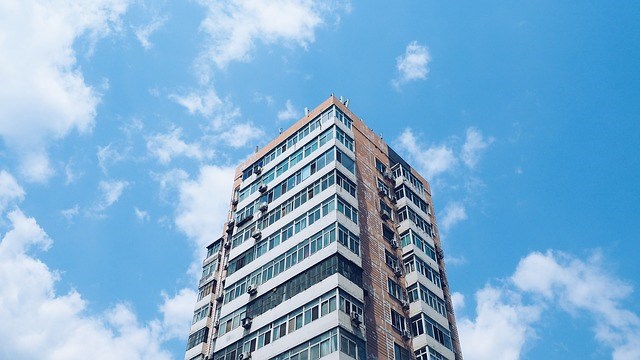Besides unwanted credit card bills, property assessments will also arrive in the mail this month.
On Tuesday, B.C. Assessment released the updated market value of more than 522,000 properties in the Greater Vancouver region. Each notice reflects the value as of July 1, 2017.
“This year, the single-family market is much more stable,” said acting assessor Paul Borgo. “The condominium market is strong again, as it was last year.”
The top valued home in New Westminster is at 122 Third Ave., at $2,751,000, followed by 101 College Ct. (2,721,000) and 218 Regina St. (2,717,000).
The most expensive condo in the Royal City is a penthouse at 200 Nelson’s Crescent, valued at $2,254,000.
According to B.C. Assessment, the average change in residential property value in New West is 12.83 per cent, when comparing 2018 to 2017.
Assessments can be lower or higher depending on where you live. For example, a single-family home in Queen’s Park from the 1910s will see a zero per cent increase, while a single-family abode built in the 1960s in Sapperton will see a 20 per cent increase.
Borgo noted a high assessment doesn’t mean high property taxes.
“(Municipal and provincial) budgets and mill rates are calculated independent of that, so if you get an increase in your property assessment, you won’t likely receive a similar increase in property taxes. It’s an independent calculation,” he told the Record.
The City of New Westminster approved a 2.98 per cent tax increase in 2017. The increase, which represents the cost of paying for ongoing municipal services and increases related to salaries and benefits, equalled $89 in taxes and $66 in utility fees for an average single-family dwelling assessed at $1.1 million.
So how does B.C. Assessment figure out a property’s value?
The Crown corporation has a professional appraisal staff and an extensive database that is periodically updated with information gathered through appraisal inspections. Municipal and provincial agencies let B.C. Assessment know of land title changes, building permit approvals and zoning adjustments.
Assessors like Borgo look at a property’s unique characteristics, including location, size, layout, shape, age, finish, quality, carports, garages, sundecks and condition of buildings.
“Basically, the market sets the value, and we reflect it in our reporting. What that means is we’re looking to sales in the market place as an indication of what the market is doing and we follow those trends, whether it’s up or down, by looking at actual sales and seeing how they compare to the properties we’re assessing on the assessment roll,” Borgo explained.
If a property owner feels their assessment doesn’t reflect market value, they have until Jan. 31 to submit a notice of complaint.
Visit bcassessment.ca for more information or to find an individual property’s assessed value.
Do you qualify for the homeowner grant?
The homeowner grant reduces the amount of property tax people pay each year on their principal residence.
For folks under the age of 65 living in the Greater Regional Vancouver District, Fraser Valley Regional District and the Capital Regional District, the grant is $570. For all other areas of B.C., the grant is $770.
Homeowners must pay at least $350 in property taxes before claiming the grant (the amount is less for seniors, veterans or a person with a disability).
To qualify for the grant, you must:
*be a registered owner of the residence
*be a Canadian citizen or permanent resident of Canada
*live in B.C.
*occupy the residence as your principal residence
*be the owner of property with an assessed or partitioned value (see below) that does not exceed the grant threshold of $1.65 million.
*ensure you meet additional requirements if you are buying or selling your property
If a homeowner meets all the requirements but their property’s assessed valued is over $1.65 million, they may qualify for the grant at a reduced amount. The grant is reduced by $5 for each $1,000 of assessed value over $1.65 million. This means the grant isn’t available for properties assessed over $1,714,000 ($1,754,000 in a northern and rural area).
What is partitioned value?
The partitioned value of a property is the property’s assessed value divided by the number of residences on that property. To qualify, each residence must have cooking, sleeping, bathroom and living room facilities.
Homeowners who partition their property value may qualify for the homeowner grant if:
*they previously couldn’t, or could only claim a reduced grant, because of the high assessed value of their property
*their property consists of a principal residence and at least one separate residence
Laneway homes and multi-family dwellings like a duplex, triplex and fourplex qualify as separate residences. A suite in a principal residence doesn’t qualify as a separate residence.
Apply, apply, apply
Homeowners must apply for the grant each year to receive it.
Keep in mind that only one qualifying owner can claim a grant for a property each year.
Grant amounts may be higher for homeowners who are seniors, veterans or a person with a disability.
The grant application will be included with your property tax notice, which will be mailed out at the end of May. (Property taxes are due July 4.)
Residents can also fill out the application online at tinyurl.com/BBYGrantApp.
More questions?
For more info, visit tinyurl.com/HomeownerGrant.
– Source: Province of British Columbia



